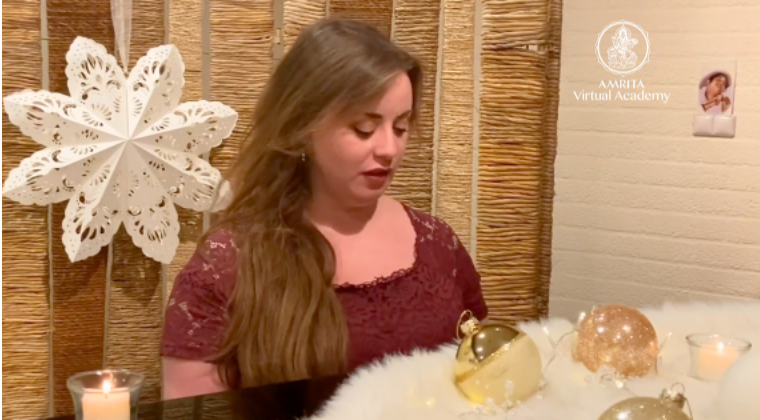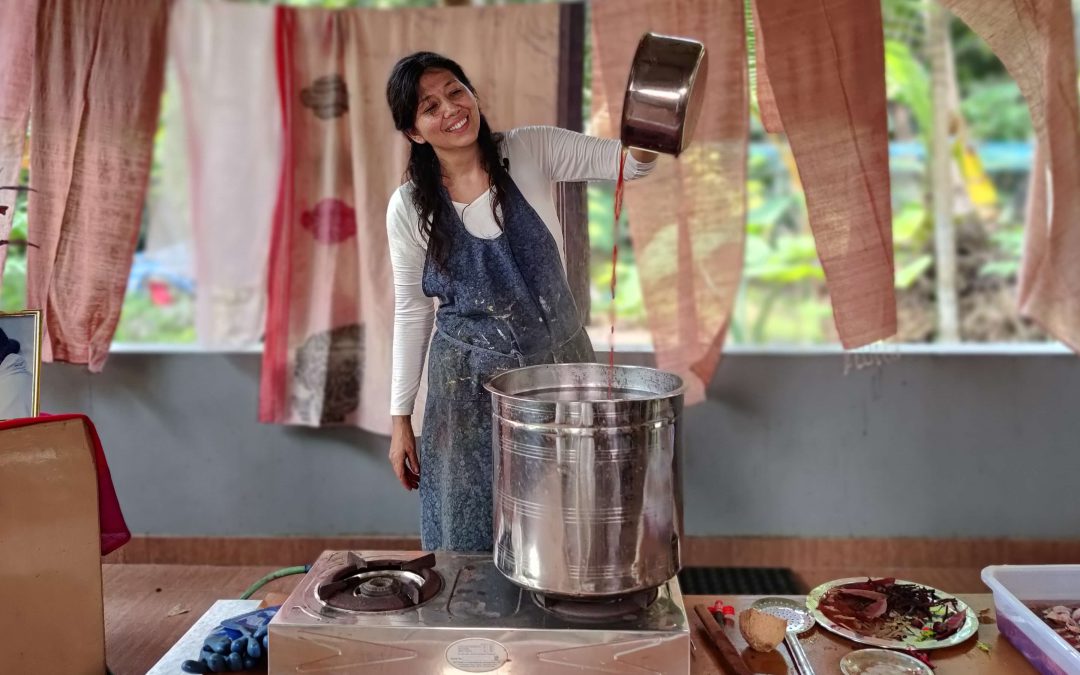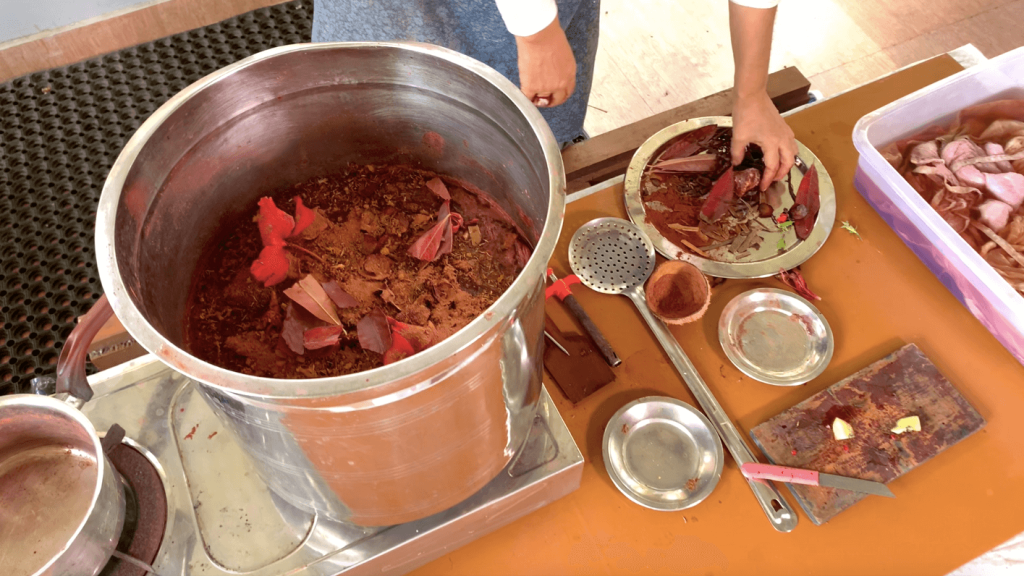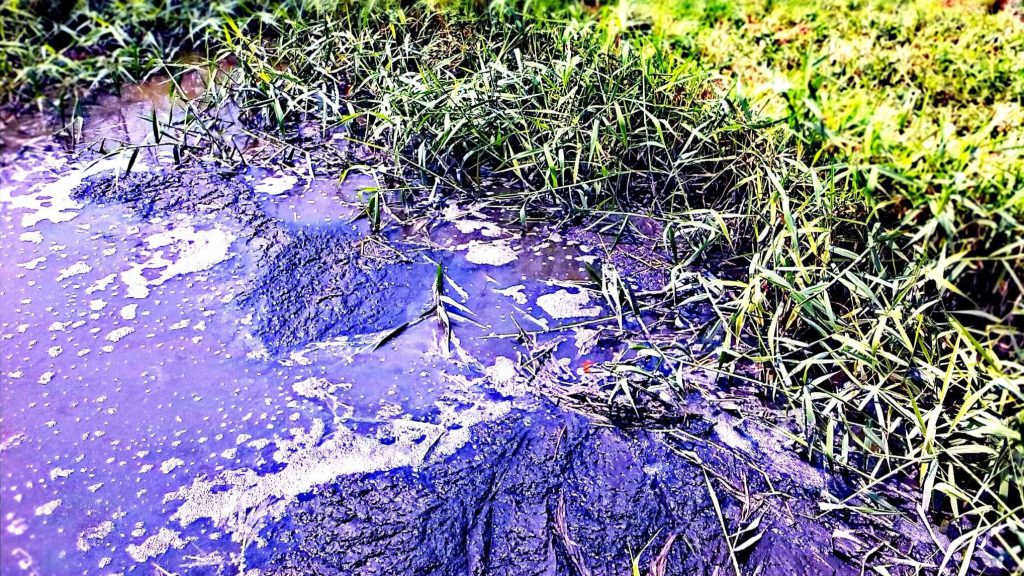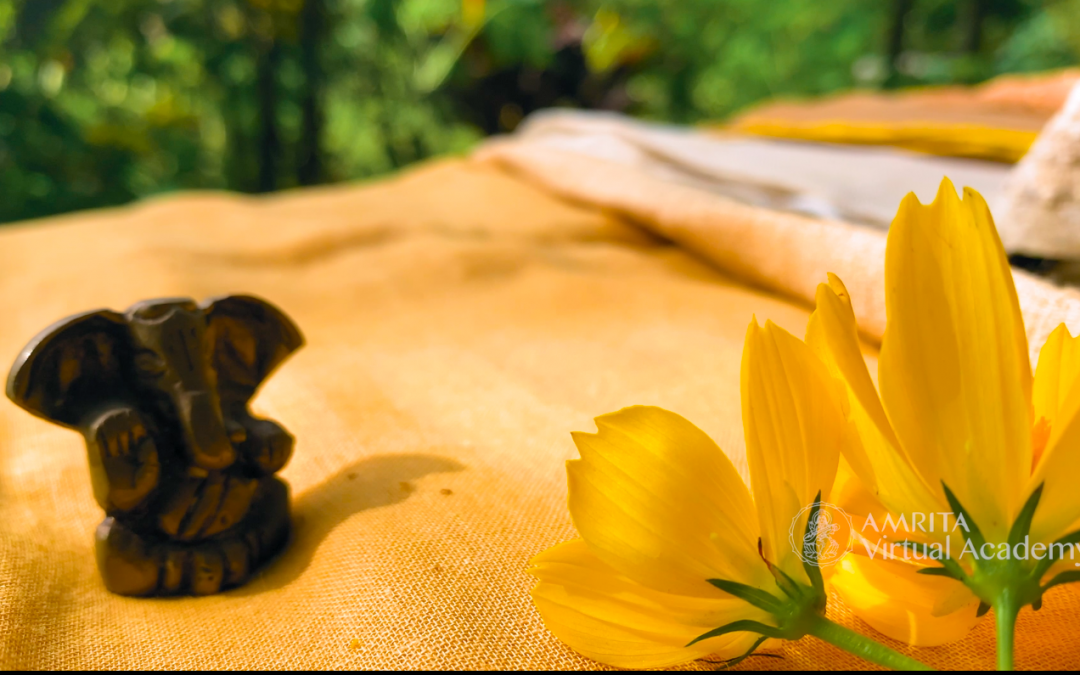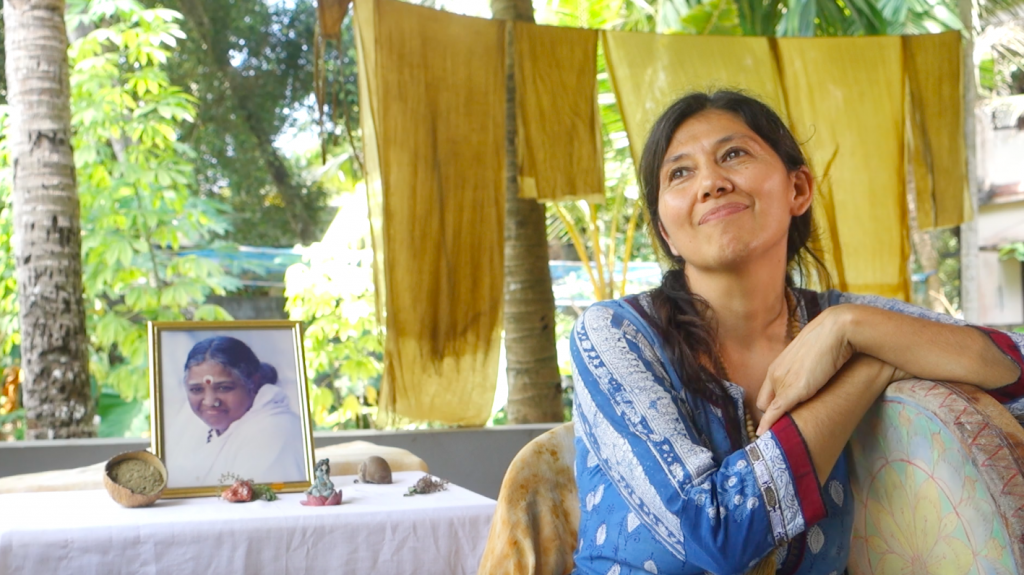
🌸 Feminine Grace – 24 Hours in the AVA Membership
Written by Tanmayi, Netherlands
For almost two years I have been doing seva (“selfless service”) for Amrita Virtual Academy. And, since I rarely get to take any of the courses, I honestly got very curious about all that’s in the Amrita Virtual Academy Membership. I love almost all the topics I see, and want to know exactly what I can learn. So, I decided to try out the Membership for 24 hours, have fun, and take you along. You’re invited to join me as I share my weekend adventure with you!
SATURDAY NIGHT
To begin, let me first login, and take another look at the AVA Membership…
On the Student Dashboard I see all kinds of courses presented right away. Hmm… What shall I choose? I’ve got to start somewhere. What I’ve been longing to check out are the “Natural Living: Health and Harmony” and “Art of Natural Plant Dyeing” courses, plus the “Amrita Prasadam Indian Cooking” and “Devotional Singing” courses. (I also work as a classical singer, so I am curious to dive more deeply into devotional singing.)
Also, I looooove, love, love cooking, so I want to see the amazing recipes and videos of the Indian Cooking classes.
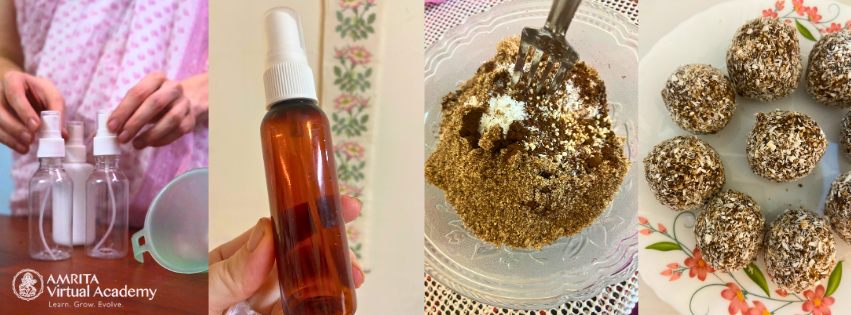
My only activity tonight is to look around the Student Dashboard, and watch some of the content, so I know what to plan for tomorrow. Let’s start with my absolute favorite, Natural Living!!!
Exploring the Wellness Course, “Natural Living: Health and Harmony”
Oooh, a prayer to Amma before the course starts. Love it!
And, the video shows the Ecoshop in Amritapuri! I’m in India now, so I can easily go there. But, I imagine if you are in the West, and you miss the ashram here, then seeing the Ecoshop can literally feel like AVA is bringing Amritapuri into your home.
Oooh, we can learn to make eco-friendly gifts that support nature!
Look, it’s my singing friend in the video! “Hi Tejasvini! You look so cute in your white-and-pink sari!”
Right, we are going to make Mist Sprays with Essential Oils!
I have wanted to do that for so long. I don’t have the essential oils at home that she speaks about, but tomorrow I will check which oils I DO have, and then make a home-and-body spray! Yippie!
Okay, next…I would love to cook something this weekend from the Indian Cooking courses.
Oooee, what are these Vegan Bliss Balls in Natural Living?
Wait, what? I seriously have everything in my flat (apartment) to make these balls tomorrow! But you know, since I’m no longer tired, I’m going to start making them right away.
Looking in my kitchen I see I have 90% of the ingredients, and have decided to replace the oatmeal with puffed quinoa. First I mix the dry ingredients, then add the wet ingredients, and make the bliss balls. Wauw, they are delicious! And, so easy to make.
Well, after that, I am still energized, so I’m going to see if I have any essential oils to make the mist spray taught in the course. Hmmm, I don’t have any, except a few final drops. But, what I do have, is a brown, plastic spray bottle I can use for when I do have oils. (You can see a photo of the brown bottle above and a fabric strip of my mum’s embroidered roses pictured in the background.) I’m going to head over to the Ecoshop in the coming days, and check if I can get some affordable oils to make my own spray. We will be going on tour with Amma soon, so I don’t want to spend too much now.

SUNDAY MORNING
Learning Indian Cooking with the “Amrita Prasadam” Courses
There are so many wonderful Amrita Prasadam videos and recipes to choose from! I decided to make dosas, and check out the recipe for Coconut Chutney. Cool—all the recipe videos are right there on the Cooking page. (I clicked on “Cooking” in the left menu, on the Student Dashboard to bring up the Cooking page. I could also just type “coconut chutney” in the search bar to get there.) And, there is a video with the recipe: “Masala Dosa & Coconut Chutney”. Right, I see this is high-level Indian cooking. This is a great recipe for coconut chutney, but I don’t have everything needed in my little kitchen, so let’s make it with what I have! Yeah! It turned out to be yummy. Thank you, Vaju! <3
SUNDAY AFTERNOON
Starting the Devotional Singing Course!
The prayer to Amma in the beginning is really awesome. Since we do it before every seva in the ashram, it becomes a regular part of life. Also, it’s beautiful how the focus of the singing course is on connecting more to Amma by singing bhajans. Ooo… I see it’s a course for 8 weeks.
I looked quickly through it and saw videos with all kinds of vocal exercises to learn ragas. (A raga is like a set of rules for building a melody—very similar to the Western concept of a music scale or mode.)
Wauw! I wanna learn this. And you know what’s amazing? You can make a video of yourself, and send it in to the teaching assistant to get feedback on your singing! In the coming weeks I will continue taking this singing course with Ratna. (She’s Brahmachari Ramanandamritaji’s sister!)
I have seen the satsang, “The Essence of Music”, with Swami Amritaswarupananda Puri in the past weeks, and it is just gold! A must watch for music lovers.
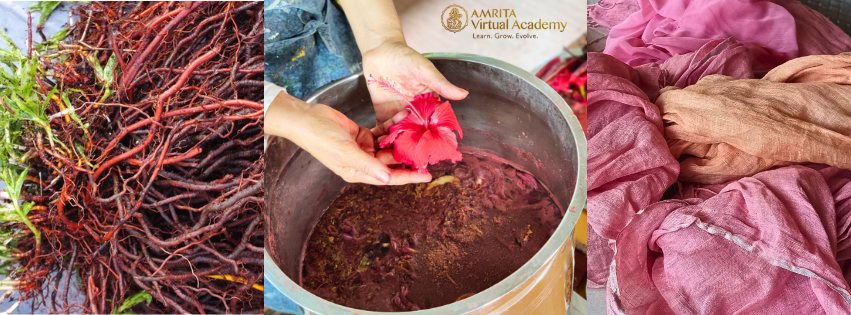
SUNDAY EVENING
Enjoying The Art of Natural Plant Dyeing
Now, finally I can go into The Art of Natural Plant Dyeing! I was ‘dying’ to dive into this one… Okay, I see now that the course includes 12 hours of videos. So, let’s get started!
This whole course was recorded here in Amritapuri, in the Saraswati house—a place not everybody knows of yet. I was there a while ago, and it felt as if I went into the forest to see the medicine lady (the good witch) of the village to learn about the healing properties of different plants and herbs.
The sevites (volunteers) in the Saraswati house make all kinds of beautiful clothes with fabrics and natural dyes—one of the ultimate feminine and natural spots in Amritapuri.
Ayurvastra is an old ‘craft’ or ‘science’ about the healing art of natural plants in fabric. I learned from the class that it takes far more time to dye fabrics this way than it does to dye fabrics for the clothes we buy in regular shops. But, it is so healing for us, and also for the environment. “Fast fashion” becomes landfill garbage. I would love a sari dyed with Ayurvastra! Also in the Amrita Boutique here in Amritapuri, garments are sold that are made by Padma, who volunteers in the Saraswati house. (You can see her in the photo here, along with our Mindful Movement instructor, Neelima.)
Like Devotional Singing, Art of Natural Plant Dyeing is an 8-week course. I will be watching it in parts in the coming weeks, since I don’t want to overload myself now.
CONCLUSION
I’ve learned it’s especially good if you can join the year-long AVA Membership option, because, dear Goddess, it’s so beautiful, all this content! Soooo much valuable learning, plus arts and crafts…I am so grateful I have found this.
I didn’t even get into the language courses, the retreats, and the gardening courses yet. This is a true treasure chest of knowledge, with amazing spiritual lessons and satsangs everywhere you look! Truly “Learning Values Through the Arts!”
Love, Tanmayi
Netherlands
P.S. Hey, that’s me in the AVA Membership… Ooooh It’s from my own little singing course…
